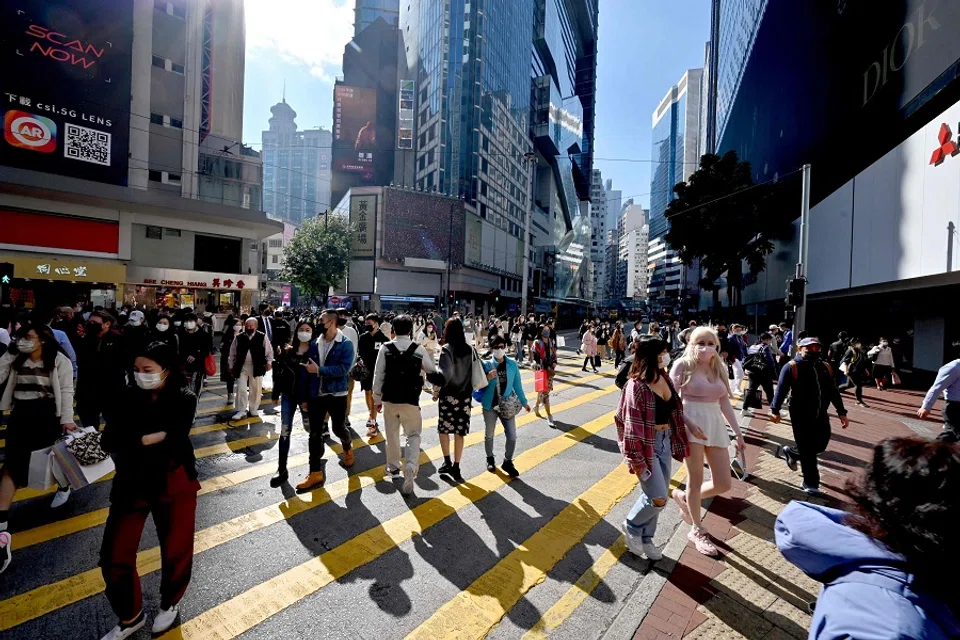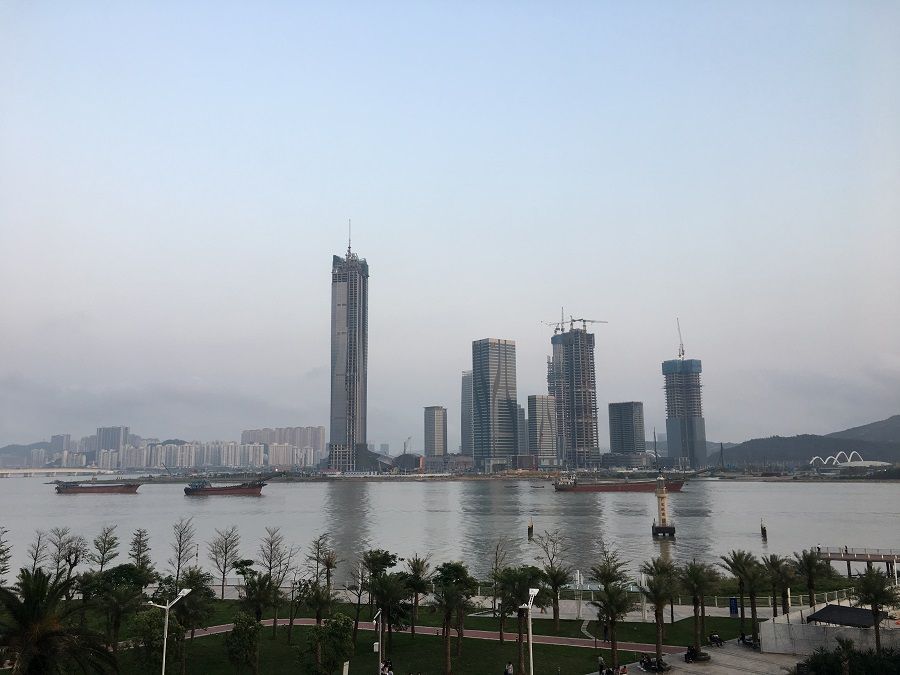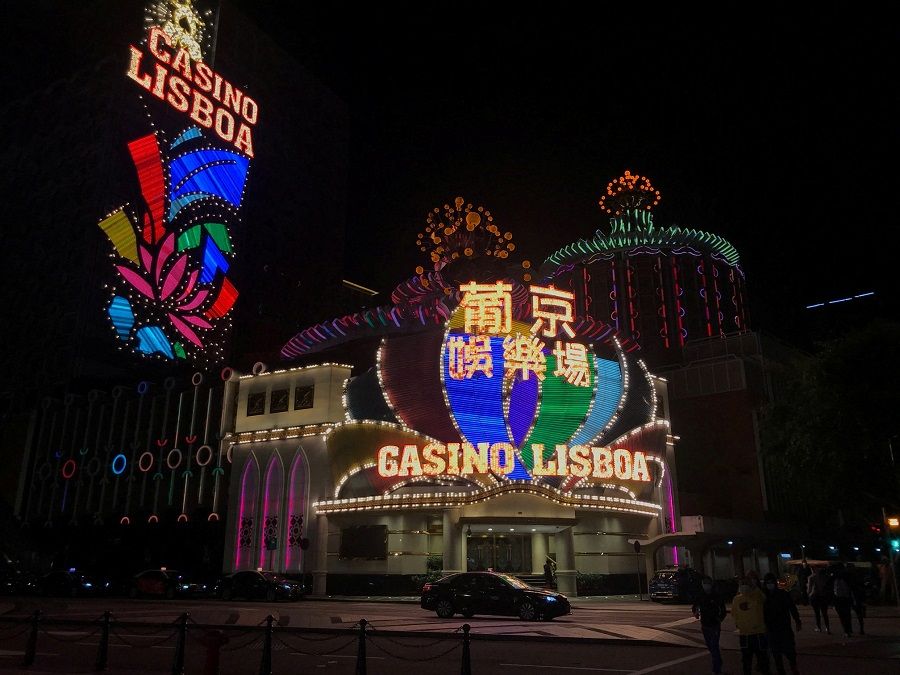China's grand plans to further integrate Hong Kong and Macau. Will they work?

The Chinese Communist Party Central Committee and State Council of China jointly released the Master Plan of the Development of the Guangdong-Macau Intensive Cooperation Zone in Hengqin (henceforth, the Hengqin Plan) and the Plan for Comprehensive Deepening Reform and Opening Up of Qianhai Shenzhen-Hong Kong Modern Service Industry Cooperation Zone (the Qianhai Plan) separately in early September 2021. These two plans are targeted at deepening economic cooperation and promoting cross-border integration within the Guangdong-Hong Kong-Macau Greater Bay Area (GBA).
The GBA, with around 82 million in population, is a major economic powerhouse for China. In 2020, the combined GDP of the GBA was US$1.67 trillion, representing 12% of the nation's total GDP. The GBA includes the two Special Administrative Regions of Hong Kong and Macau, as well as nine Guangdong cities of Guangzhou, Shenzhen, Foshan, Huizhou, Zhuhai, Dongguan, Jiangmen, Zhongshan and Zhaoqing.
More than regional economic initiatives
Beijing's plans for Qianhai and Hengqin are far more than mere regional economic plans. The Hengqin and Qianhai Plans seek to further integrate the economies of Hong Kong and Macau into the mainland in general and the GBA in particular.
Luo Huining, director of the Liaison Office of the Chinese central government in Hong Kong, in a seminar speech outlining China's 14th Five-Year Plan in August 2021 shortly before the issuance of Beijing's two new plans, clearly stated, "The rejuvenation of China is a trend that cannot be stopped, so Hong Kong needs to better integrate with the mainland and seizes the opportunities it offers."

Beijing will use Hengqin and Qianhai as the demonstration zones to roll out more pilot measures (e.g. cross-border financial connectivity) to forge cross-border industrial collaboration between Guangdong, Hong Kong and Macau by attracting Hong Kong- and Macau-invested firms and people from Hong Kong and Macau to the GBA.
The development of Qianhai and Hengqin would not have been possible without the inflow of investment and talent from Hong Kong and Macau. Hong Kong's experience as a well-established international financial centre with a prudent and robust financial regulatory regime and internationally active financial markets would be essential for Qianhai and Hengqin if they are to provide similar, comprehensive and sophisticated financial and professional services.
By developing the Hengqin Macau New Neighbourhood Project, the state plans to attract up to 10,000 Macau locals to become permanent residents of Hengqin by 2024.
Greater dynamism in Macau development expected with Hengqin Plan
Beijing's two new plans differ in terms of development orientation, governance structure and industrial cooperation priority. Hengqin is an island located in the southern part of Zhuhai city, next to Macau.
Under the Hengqin Plan, enterprises and people working and residing in Hengqin will be offered low corporate and income tax respectively, capped at 15%. The plan is for Hengqin to focus on research and manufacturing of semiconductors and traditional Chinese medicine. Meanwhile, products made in Hengqin will be specifically labelled as Macau-manufactured.
In Hengqin, there are 314 Macau-invested firms and around 900 Macau professionals working in the tourism, Chinese medicine, construction and social service sectors. By developing the Hengqin Macau New Neighbourhood Project, the state plans to attract up to 10,000 Macau locals to become permanent residents of Hengqin by 2024.

To promote cross-border infrastructure connectivity, the Qingmao Port, a new cross-border corridor linking Macau with Zhuhai city on the mainland side, was put into operation in early September 2021. It operates 24 hours a day to ease the custom clearance pressure on the existing Gongbei Port and the daily passenger traffic congestion across the border. Meanwhile, Macau's light rail service will be linked to the Zhuhai urban rail network and integrated with the national high-speed rail services.
Under the Hengqin Plan, the Chinese government will grant a fairly large chunk of mainland territory (around 100 square kilometres once administered by the Zhuhai government) to Macau as a gift. This would certainly work in Macau's favour as small parts of Hengqin have already been leased by Macau entities (for example, the new Hengqin campus of the University of Macau) with the approval of the Standing Committee of the National People's Congress of China.
Macau will be given control or at least joint administration of Hengqin, with the Macau law and regulation applied.
In a nutshell, Macau will be given control or at least joint administration of Hengqin, with the Macau law and regulation applied. This new Hengqin governance model is perceived as deliberately blurring the lines between the mainland and Macau, which has been governed under the "'one country, two systems" model since 1999.
Hengqin will be jointly run by the Macau government, Guangdong provincial government and Zhuhai city government. Macau will take charge of urban planning and land development, investment promotion and daily management of Hengqin, whilst the Guangdong authorities will be responsible for maintaining social order and national security on the island. An institutional system headed by two directors, namely the governor of Guangdong and the chief executive of Macau, was put in place for the development of Hengqin when a Joint Management Organisation was officially launched on 17 September 2021.
The move aims to create new space for Macau to push for economic diversification. Macau's economy has long relied on the gambling industry, which accounted for over 60% of Macau's GDP in 2019. Gambling tourism, for which mainland tourists constitute the majority, is the main source of gambling revenue for Macau. However, Macau's casino-oriented development model is fragile and unsustainable. The global outbreak of the coronavirus has curbed travel to Macau. Both foreign and mainland Chinese visitors to casinos in Macau have plummeted since February 2020, which illustrates the vulnerability of Macau's economic structure.

Macau's current territorial size covers just 115 square kilometres, but under Beijing's new plan, the size of Macau will essentially be doubled. The extra space provided in Hengqin will be vital for expanding and diversifying Macau's economy. Hengqin could therefore bring new economic vibrancy to Macau. Macau's control of Hengqin and the state's preferential measures will give Macau the impetus to push forward economic diversification by creating new development opportunities for its tourism, financial, meeting and exhibition industries, and Chinese traditional medicine sector. The Chinese government also expects Hengqin to focus on developing its high-tech sectors such as the manufacturing of semiconductors and biomedicine.
Even before its handover in 1999 to mainland China, Macau was attempting to maintain strong socioeconomic ties with the mainland to sustain its local economy by leveraging its role as a gateway for China to the world. The Macau people are overwhelmingly pro-Beijing. According to the Macau Annual Survey undertaken by the Hong Kong Public Opinion Research Institute, Macau residents have a strong sense of national identity as citizens of the People's Republic of China. About 72% of Macau respondents have expressed their confidence in the "one country, two systems". The same survey shows that 62% of Macau residents trust the Chinese central government and over 80% have confidence in China's future. The Chinese government believes that the joint governance model will work for Hengqin.
On the other hand, there is no mention of the Hong Kong authorities running or jointly administering Qianhai.
Territorial rifts vis-à-vis Qianhai Plan
On the other hand, there is no mention of the Hong Kong authorities running or jointly administering Qianhai. According to the Qianhai Plan, China plans to expand the size of Qianhai by roughly eight times, from 15 square kilometres currently. The goal is to deepen service trade liberalisation with Hong Kong. Qianhai, located in Shenzhen city, is viewed as a pilot zone for forging close collaboration on finance and other modern service industries between mainland China and Hong Kong. To Shenzhen and Guangdong, Qianhai is their crown jewel, and the mainland side has no intention of sharing its governance and management of Qianhai with Hong Kong.

Hong Kong investment is crucial for the development of Qianhai. By the end of 2020, over 11,000 Hong Kong-funded firms had registered in Qianhai, which accounted for US$22.6 billion or about 53% and 20% of inflows of foreign investment to Shenzhen and Guangdong province respectively.
As Guangdong, Hong Kong and Macau have different administrative boundaries and distinguished legal systems and government institutions, the Chinese central authorities have announced a master plan for Hengqin and Qianhai to roll out specific policy measures and practical arrangements to facilitate the flow of capital, people and information across borders within the GBA.
Despite the state's push to forge stronger links between Hong Kong and mainland China, many in Hong Kong society have resisted further integration with the mainland for fear of the further "mainlandisation" of Hong Kong. The cross-border transport restrictions imposed by the authorities as a result of the Covid-19 pandemic have further hampered the flow of people between Hong Kong, Macau and the mainland cities.
Hong Kong and Macau's industrial and economic linkages with Qianhai and Hengqin are currently weak. While Beijing's new plans for Hengqin and Qianhai may look promising on paper, how attractive these two special zones will turn out to be for both Hong Kong and Macau citizens, and how Hong Kong firms could ramp up the development of the two zones remain to be seen.
An initial version of this article was first published as an East Asian Institute Commentary.
Related: Xi's five-year plan for Shenzhen: A hard road ahead? | From Hong Kong movies to Greater Bay Area movies: A new Hollywood of the East in making? | Hainan free trade port: Replacing Hong Kong? | Greater Bay Area: Ambitions, realities and the position of Hong Kong | Taking a long hard look at Macau's stellar performance | China's 14th Five-Year Plan will be a game changer
